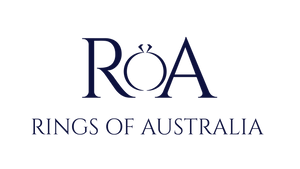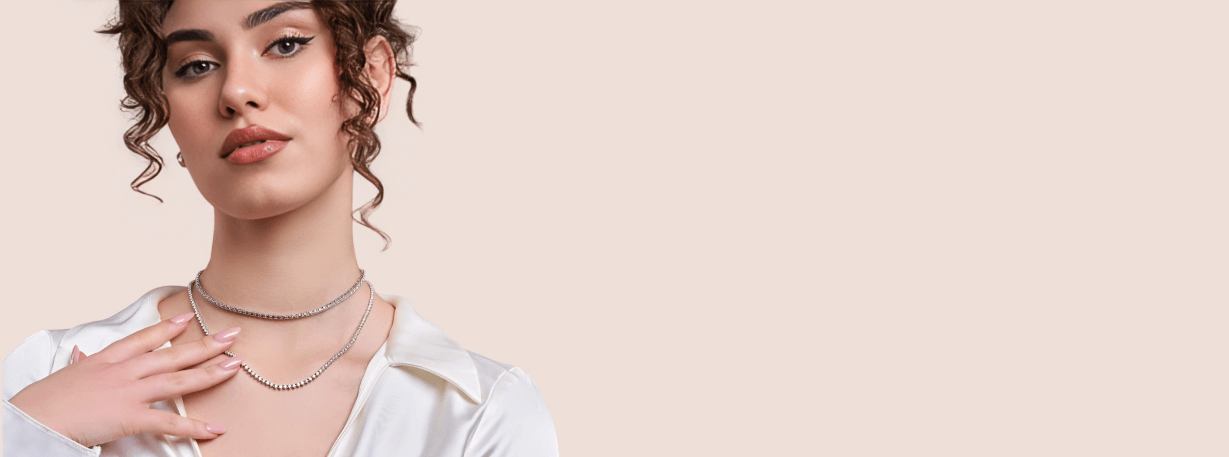Diamonds are symbols of love, luxury, and investment. But in today’s market, where imitations are common and synthetic alternatives are advancing rapidly, how can you be sure you’re buying a real diamond? Whether you're shopping for an engagement ring or investing in fine jewellery, knowing how to spot a fake diamond is essential.
In this guide, we'll walk you through key tips and tests to help you identify a real diamond and avoid costly mistakes.
Why It's Important to Identify Fake Diamonds
Diamonds carry significant emotional and financial value. With the rise of lab-grown diamonds, cubic zirconia, and moissanite, the lines between real and fake have become blurry. Even trained eyes can sometimes be deceived. Learning how to distinguish between authentic and imitation stones can help you:
-
Avoid fraud
-
Make informed investment decisions
-
Protect your sentimental purchases
-
Understand the true value of what you're buying
Common Diamond Imitations to Watch Out For
Before diving into the tests, let’s look at some of the most common diamond alternatives:
-
Cubic Zirconia (CZ) – Cheap, heavier than diamonds, very sparkly but lacks the hardness.
-
Moissanite – More expensive than CZ and often mistaken for diamonds due to similar brilliance.
-
White Sapphire – Less brilliant, duller appearance.
-
Glass or Crystal – Very soft and easy to scratch or chip.
-
Lab-Grown Diamonds – Chemically and physically identical to natural diamonds, but not "fake." Certification is key here.
1. Check for Certification
Always ask for a certified diamond grading report from a reputable gemological lab such as:
-
GIA (Gemological Institute of America)
-
IGI (International Gemological Institute)
-
AGS (American Gem Society)
These labs use strict standards to determine if a diamond is natural or lab-created and grade its quality.

2. Fog Test
How it works: Breathe on the diamond like you would a mirror.
-
A real diamond disperses heat quickly and should clear up almost instantly.
-
A fake diamond (like CZ) will fog up and stay fogged for a few seconds longer.
Note: This test works best in cooler environments and isn’t foolproof.
3. Water Test
Fill a glass of water and drop the loose stone in:
-
Real diamonds will sink due to their high density.
-
Fakes like CZ or glass often float or sink slowly.
This test is quick and easy but only effective for loose stones.
4. Check Under UV Light (Black Light Test)
Place the diamond under UV (ultraviolet) light:
-
Many natural diamonds glow blue under UV light (fluorescence).
-
Fake diamonds may glow differently or not at all.
Caution: Some real diamonds don’t fluoresce, so this test alone isn’t conclusive.
5. The Newspaper Test (Clarity Check)
Place the diamond flat-side down over newspaper print:
-
Real diamonds refract light intensely, so you shouldn't be able to read the text through them.
-
Fakes like glass or CZ may allow you to see black smudges or even read the print.
6. Use a Loupe to Inspect for Flaws
Jewellers use a magnifying glass (loupe) to check for natural imperfections (inclusions):
-
Real diamonds typically have tiny inclusions or imperfections.
-
Fakes are often flawless because they are factory-made.
You can purchase a jeweller's loupe online or ask a local jeweller to inspect your stone.
7. Check the Setting and Mount
Genuine diamonds are rarely set in cheap metal. Look for stamps like:
-
10K, 14K, 18K (gold)
-
585, 750 (European gold)
-
PT, Plat, or 950 (platinum)
If the setting is in a cheap or unmarked metal, the stone may not be genuine.
8. Use a Diamond Tester
A diamond tester is an electronic device that checks thermal conductivity:
-
Real diamonds disperse heat quickly and will register as genuine.
-
Moissanite may fool some testers, so opt for dual testers (thermal + electrical conductivity) for more accuracy.
9. Consult a Professional Gemologist
When in doubt, take the stone to a certified gemologist or jeweller. They have tools and training to determine a diamond’s authenticity accurately and may even offer appraisal services.
Can You Trust Lab-Grown Diamonds?
Lab-grown diamonds are real diamonds—they share the same chemical, physical, and optical properties as natural diamonds. However, they are more affordable and ethically produced, but must be disclosed and sold clearly as lab-created.
Ask for IGI or GIA certification to verify a diamond’s origin.
Summary: Real vs. Fake Diamond Checklist
| Test | Real Diamond | Fake Diamond |
|---|---|---|
| Fog Test | Clears instantly | Stays fogged |
| Water Test | Sinks quickly | Floats or sinks slowly |
| UV Light | Blue fluorescence | No or different glow |
| Newspaper Test | Can’t see print | Print visible |
| Loupe Inspection | Has flaws/inclusions | Usually flawless |
| Metal Mount | Gold/Platinum marked | Unmarked or cheap |
| Diamond Tester | Positive result | No result or fail |
Final Thoughts
Spotting a fake diamond isn’t always easy, especially with the increasing quality of imitations. But armed with the right knowledge and a few simple tests, you can protect yourself from fraud and make smarter buying decisions. Whether you're purchasing a natural diamond or a lab-grown one, insist on transparency and certification.
When in doubt—ask, test, and verify.







